When you are designing and producing high-quality T-shirts, selecting the right fabric is quite important. The choice of fabric not only affects the comfort and durability of the t-shirt but also its overall appearance. As a clothing manufacturer with 19 years of experience, we’ll explore some of the most commonly used t-shirt fabrics, including their characteristics, advantages, and considerations. By understanding the unique features of each fabric type, I trust you can understand better of each fabric and make the right decisions for your T-shirt designs.
Different Compositions of T-Shirt Fabrics
Cotton: The Classic Choice for Comfort
Cotton is one of the most popular fabrics for making t-shirts. It is soft and breathable making it super comfortable to wear. Cotton T-shirts have excellent moisture absorption properties, keeping you cool and dry throughout the day. However, 100% cotton fabrics are prone to shrinking and wrinkling and you need to be properly cared for to maintain their shape and appearance.
There are 2 different types of cotton: long staple and short staple. Most of the cotton fabrics are made of short-staple cotton as long-staple cotton only accounts for 3% of cotton production.
Long-staple cotton has longer individual fibers compared with standard or short-staple cotton. Long-staple fabric is also softer and more durable. Some well-known varieties of long-staple cotton include Egyptian cotton, Pima cotton, and Supima cotton, often used to produce high-quality and luxurious textiles, including premium bed linens, towels, and clothing. Organic cotton is sustainable cotton grown without the use of synthetic pesticides, artificial fertilizer and other toxic chemicals. In contrast, regular cotton is sprayed with huge qualities of pesticides to encourage growth.
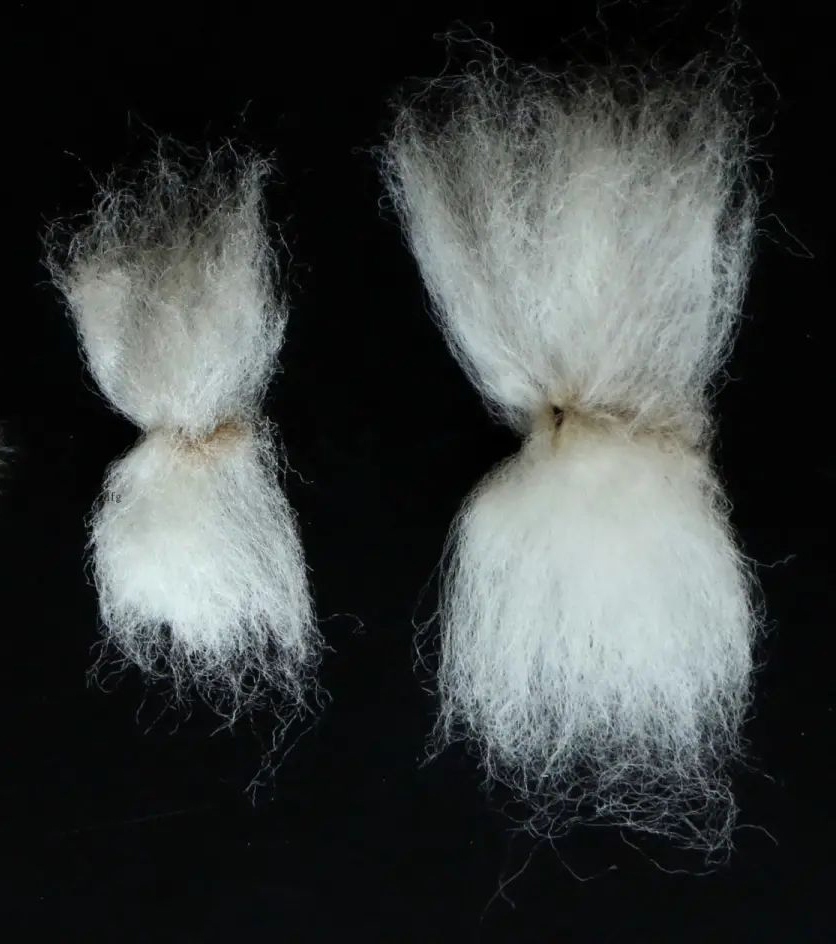
Polyester: Versatile and Durable
Polyester is the second most popular t-shirt fabric due to its durability and versatility. Polyester T-shirts are known for their excellent color retention, making them resistant to fading even after multiple washes. Polyester is also wrinkle-resistant, it will be an ideal choice if you are seeking a low-maintenance option. However, polyester fabrics lack breathability compared with those natural fabrics, which can result in a less comfortable wearing experience, particularly in hot and humid conditions.
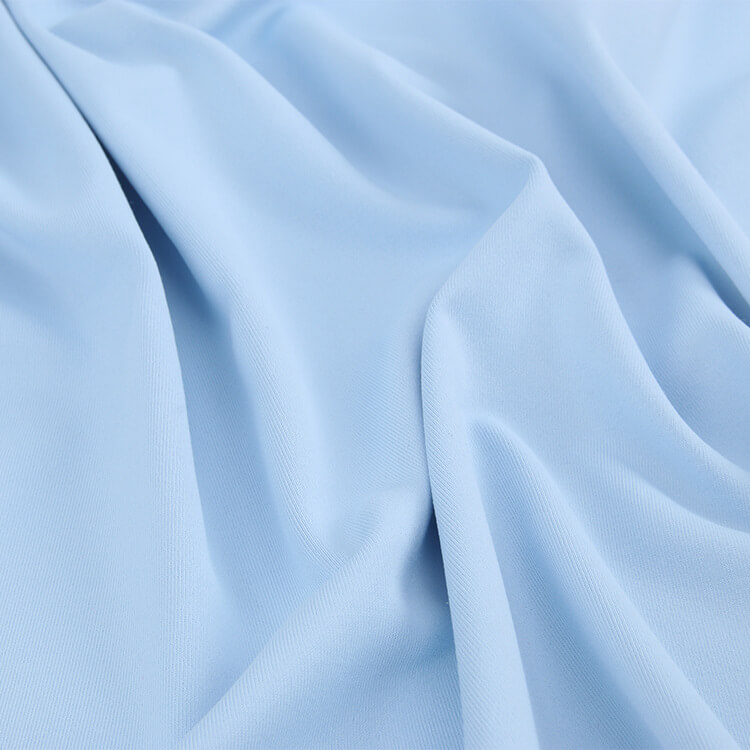
Bamboo: Sustainable and Silky Smooth
If you are looking for an eco-friendly option, bamboo fabric will be an excellent choice. Bamboo T-shirts offer exceptional softness, often described as silky smooth against the skin. It is naturally antibacterial and resists odors. Bamboo fibers are highly breathable, allowing for better moisture absorption and ventilation. Additionally, bamboo is a fast-growing fabric, making it a sustainable choice for environmentally conscious brands.
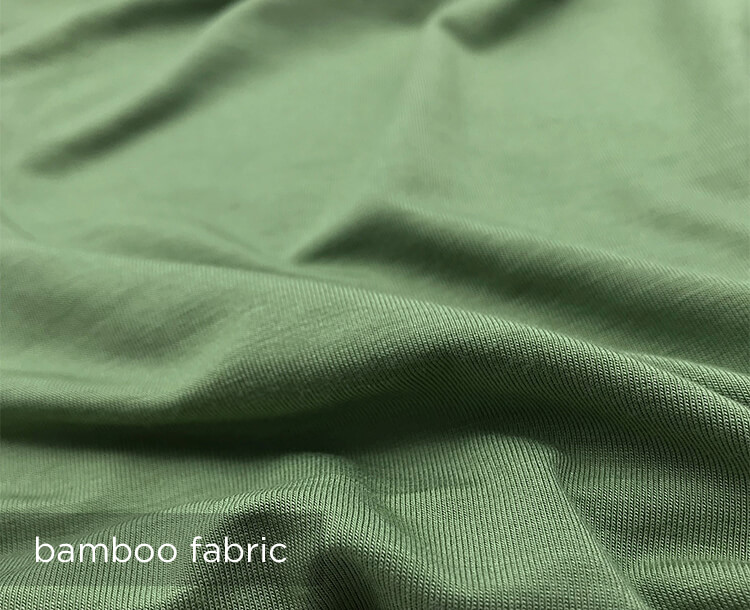
Modal: Luxurious and Lightweight
Modal fabric is renowned for its luxurious feel and lightweight nature, making it a favored choice for premium T-shirt brands. Modal T-shirts are incredibly soft, draping effortlessly on the body. The fabric has excellent color vibrancy and retains its shape well, even after repeated washing. Modal fabrics also offer good moisture-wicking properties, keeping you comfortable throughout the day. However, the modal fabric is pilling easily compared to other fabrics.
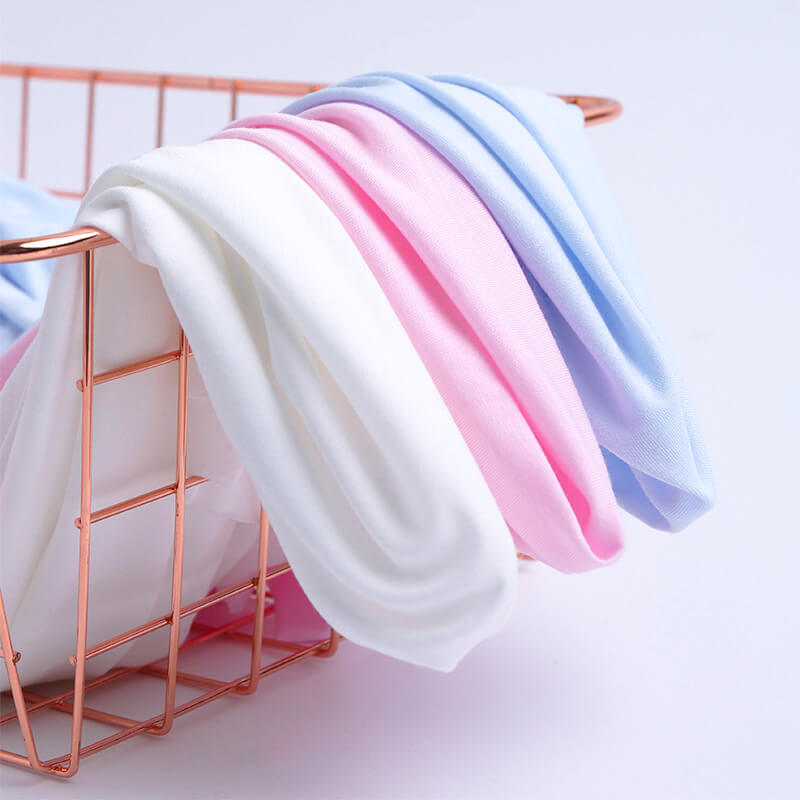
Rayon: Versatility and Drape
Rayon is a popular fabric choice for T-shirts due to its versatility and beautiful drape, extremely soft and silk-like feel against the skin. It is lightweight and breathable, allowing for excellent airflow and moisture absorption which make rayon t-shirt comfortable to wear, even in warm weather. However, it’s worth noting that rayon fabrics may require special care during washing to prevent shrinking or stretching. Another weak point is that rayon is the most wrinkle-prone of these fabrics.
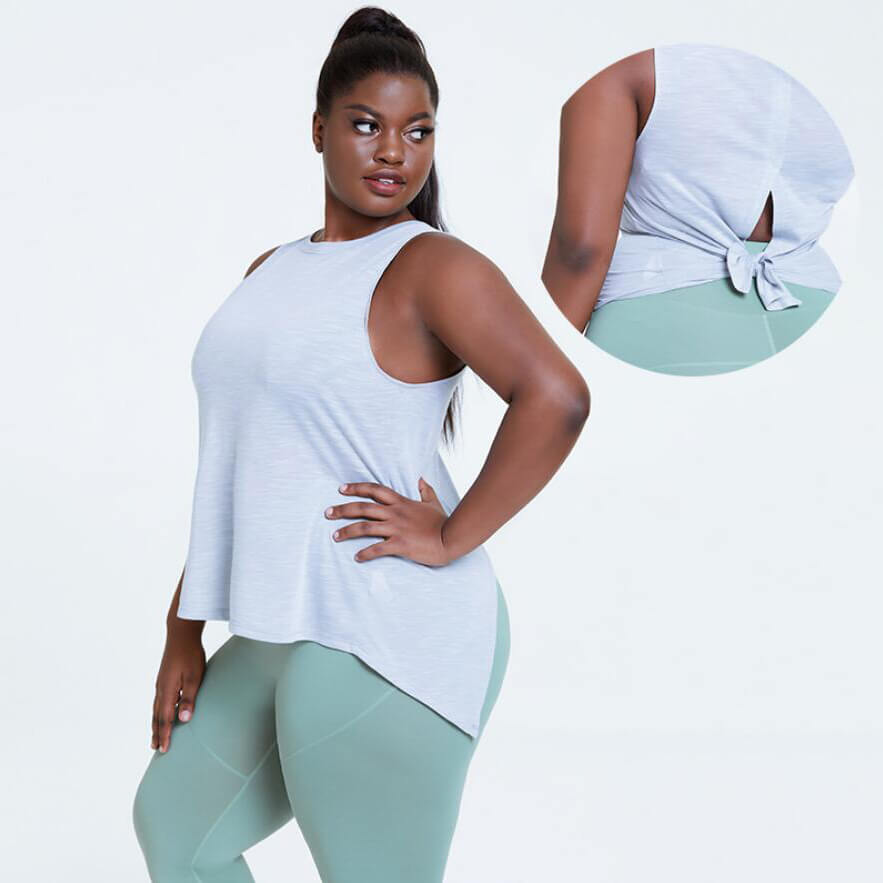
Linen Fabrics: Strong and Durable
Linen is a natural and lightweight fabric, features moisture-wicking, low-allergies, antibacterial and fungicidal, and neutralizes bad odors. Additionally, it can also protect your skin from UV. It is also a strong and durable fabric that can last for many years. One of its shortages is lacking of stretchy and not as soft as other fabrics.
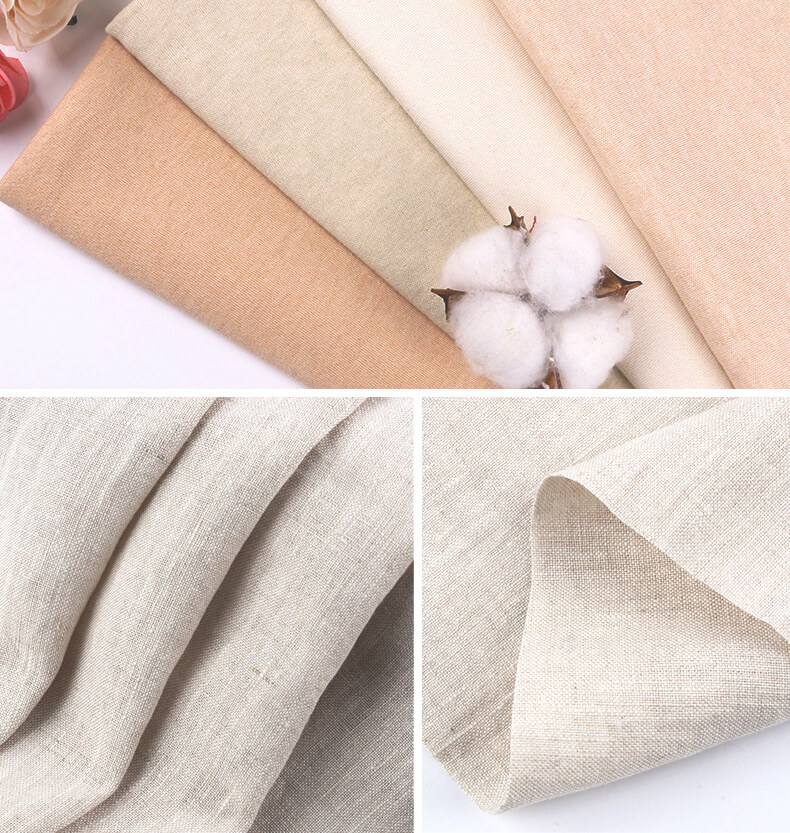
Blended Fabrics: Uniting the Best of Two Worlds
Blended fabrics, true to their name, harmoniously combine two or more fibers to forge fabric compositions that are truly exceptional. For T-shirts, the popular blends include cotton-polyester, cotton-modal, and cotton-bamboo. The true brilliance of blended fabrics lies in their ability to capitalize on the unique advantages of each fiber while skillfully mitigating their drawbacks. Take the cotton-polyester blend, for instance—it effortlessly embraces the breathability and softness of cotton, while also flaunting the remarkable durability and wrinkle resistance of polyester. This versatility bestows brands the power to customize their T-shirts with precision, creating a garment that stands as a testament to the perfect marriage of two worlds.
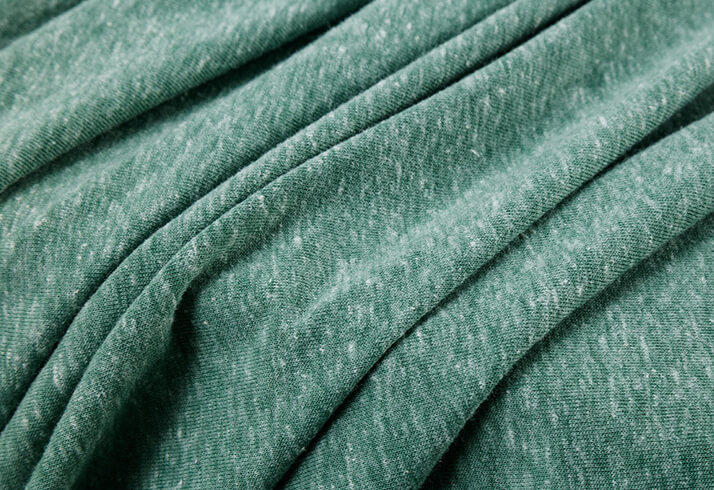
Different Knitted Types of T-Shirt Fabrics
The structure of the fabric plays a decisive role in the style of the T-shirt. In the following part, we will explore the different fabric structures that are commonly used in t-shirt production, includes their characteristics, advantages, and applications.
Single Jersey: Embracing Comfort and Flexibility
Let’s kick off with the ever-versatile single jersey fabric! It is lightweight and soft feel which makes it a go-to choice for everyday tees. Its stretchability and excellent drape ensure a comfortable fit that moves with you. With the addition of Lyra or Spandex fibers, the fabric takes on an even more elastic quality, delivering a snug embrace for your body.
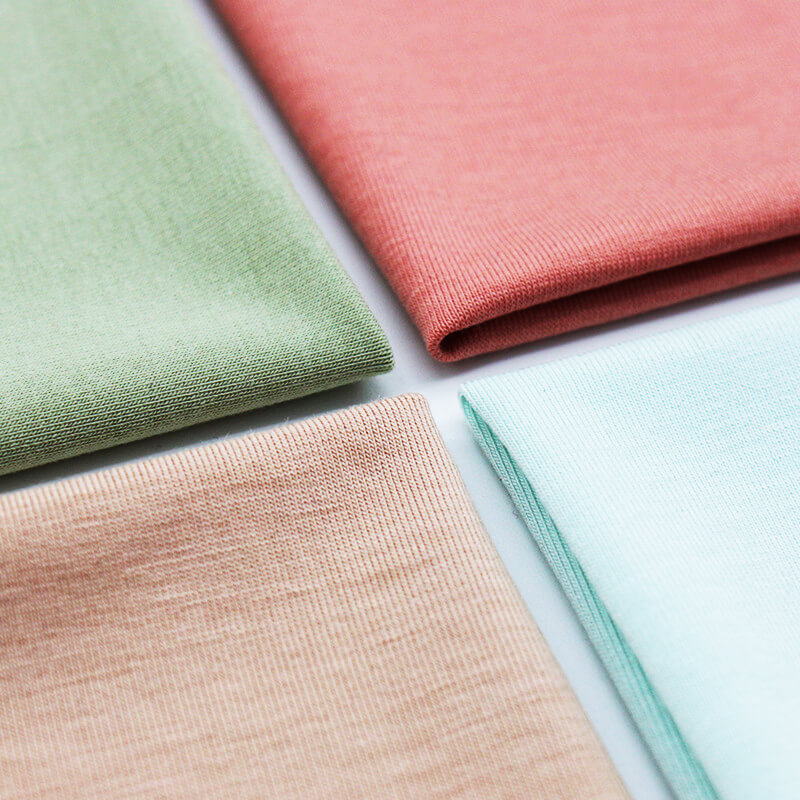
Pique: Texture and Breathability in Polo Shirts
Say hello to the classy and textured pique fabric! With its characteristic raised patterns, pique adds a touch of elegance to polo shirts and casual tees alike. Breathability is its superpower, thanks to the airy structure that keeps you cool on sunny days. Not to mention, pique’s durability and ability to hold embroidery make it a top choice for creating sophisticated polo shirts.
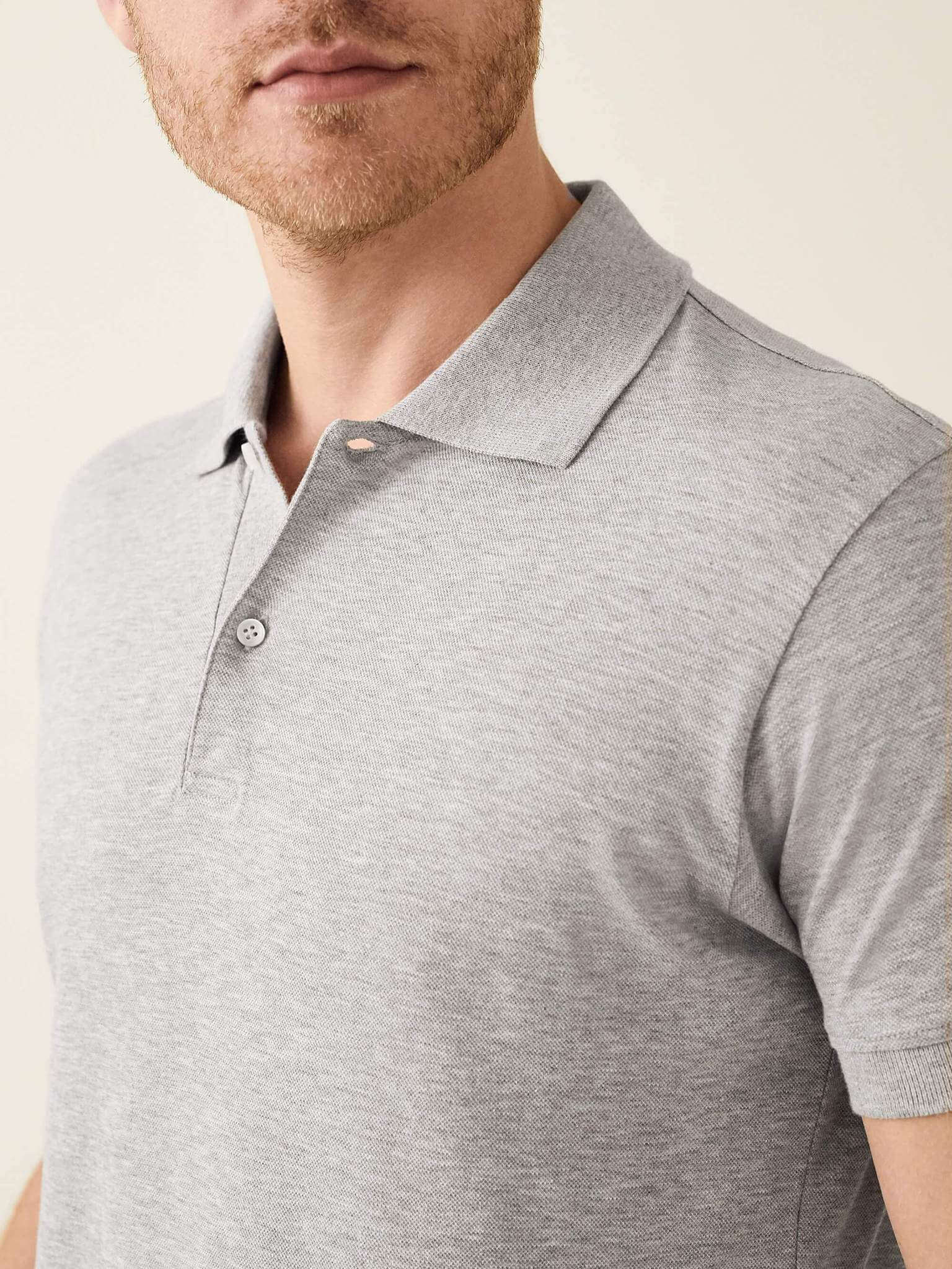
Lacoste: The Classic Polo Shirt Fabric
A close relative of pique, Lacoste fabric shares the same raised texture and breathability. It is better stretchy than pique fabric. Polo shirts crafted from Lacoste fabric retain their shape like a champ, no matter how many adventures you take them on.
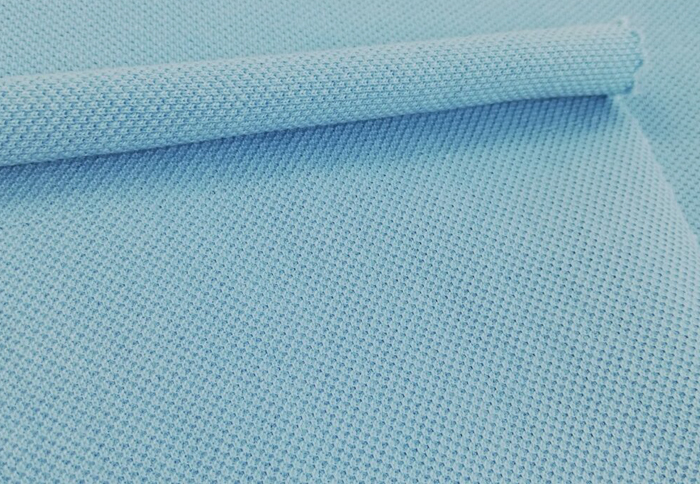
Interlock: Double the Layers, Double the Benefits
Double the layers, double the charm! Interlock fabric weaves two layers of jersey knit together, resulting in a thicker and more stable fabric. Wrinkles? Not a chance! Interlock’s wrinkle resistance ensures your tee looks crisp all day long, while the enhanced thickness provides a luxurious touch to your outfit.
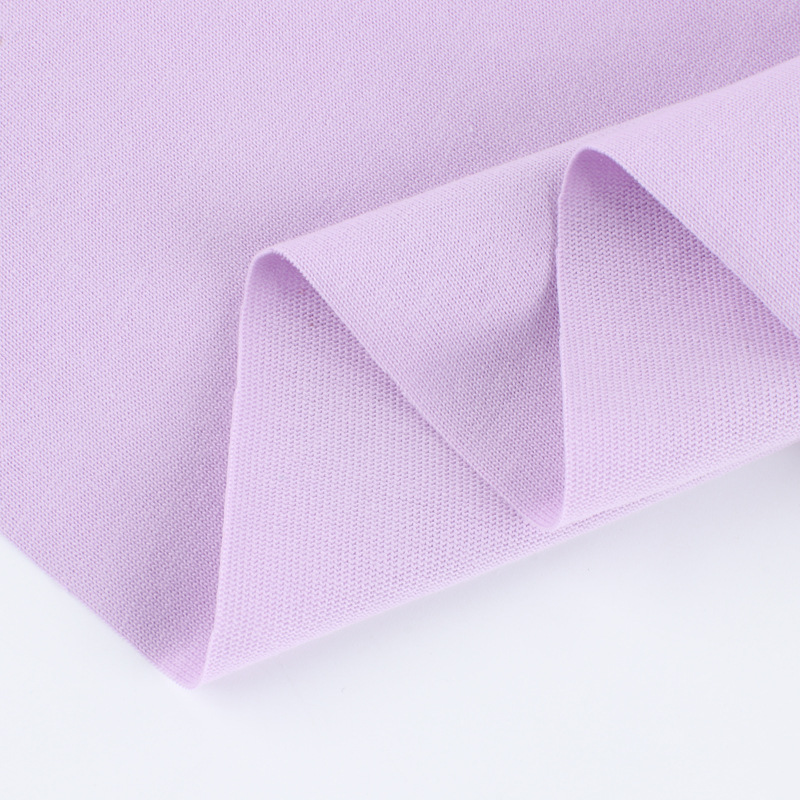
Rib: Adding Texture and Stretch to T-Shirt Designs
For a touch of texture and stretch, rib fabrics come to the rescue! With their distinct vertical ridges, rib fabrics add depth and style to your tees. Rib fabrics are perfect for creating fitted styles and adding a touch of elegance to your ensemble.
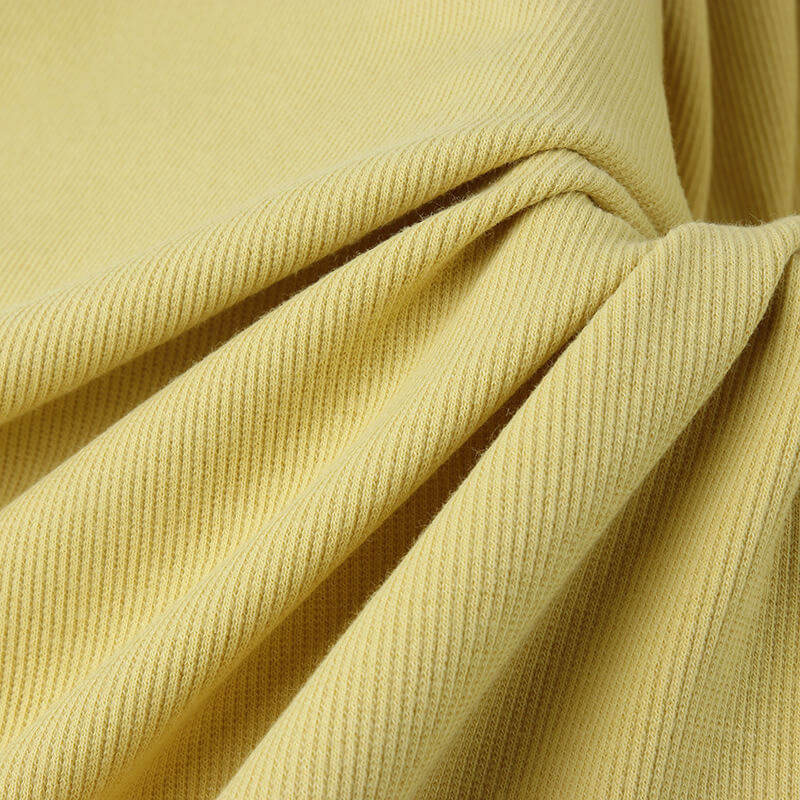
Dobby and Mini Jacquard Knit Fabrics: Intricate Patterns for Eye-Catching T-Shirts
weaving detailed designs into the fabric. From delicate florals to geometric wonders, these fabrics offer endless opportunities for eye-catching t-shirt designs. The result? A tee that’s as unique as you are.
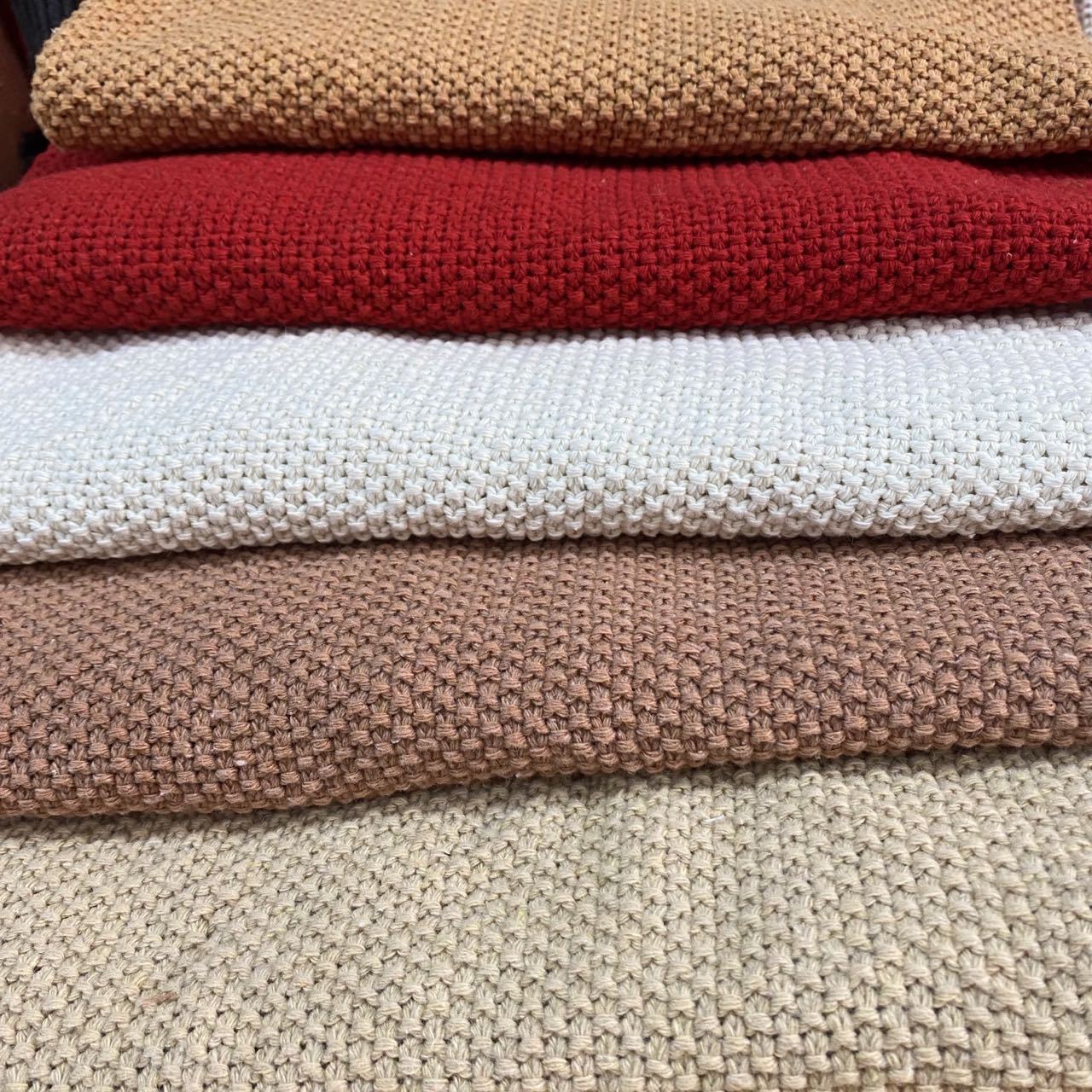
Jacquard Knit Fabrics: Endless Design Possibilities
Complexity meets creativity with jacquard knits! It allows for endless design possibilities, making your t-shirt truly one-of-a-kind. With their stunning patterns and textured beauty, jacquard knits are perfect for creating statement pieces that demand attention.
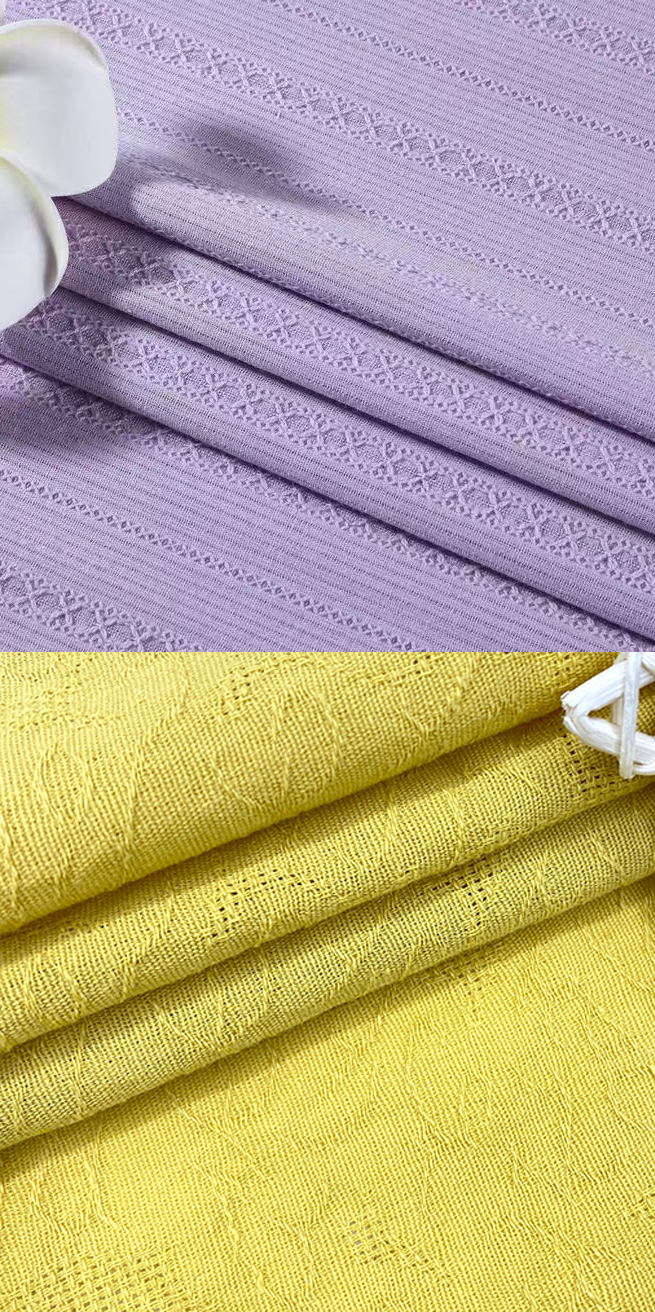
Different Spin Types of T-Shirt Yarn
There are 3 types of yarn-spinning techniques commonly used in cotton spinning: Ring yarn, Combed yarn and Open-end yarn
Have you ever wondered what makes fabrics so soft, strong? It’s all about the yarn!
Ring-Spun Yarn
What’s Ring-Spun Yarn? Ring-spun yarn is created by twisting cotton fibers using a spinning frame and a rotating ring. The result? A super smooth and even yarn that feels like a dream.
Features of Ring-Spun Yarn:
Softness Galore: Ring-spun yarn is all about that cozy comfort! It’s so soft and gentle, perfect for snuggly clothing and comfy textiles. Rock-Solid Strong: Say goodbye to weak fabrics! Ring-spun yarn’s twisting process gives it extra strength and durability.
Combed Yarn
What’s Combed Yarn? Combed yarn goes through an extra combing process that removes short fibers and leaves us with the best of the best – long and uniform fibers.
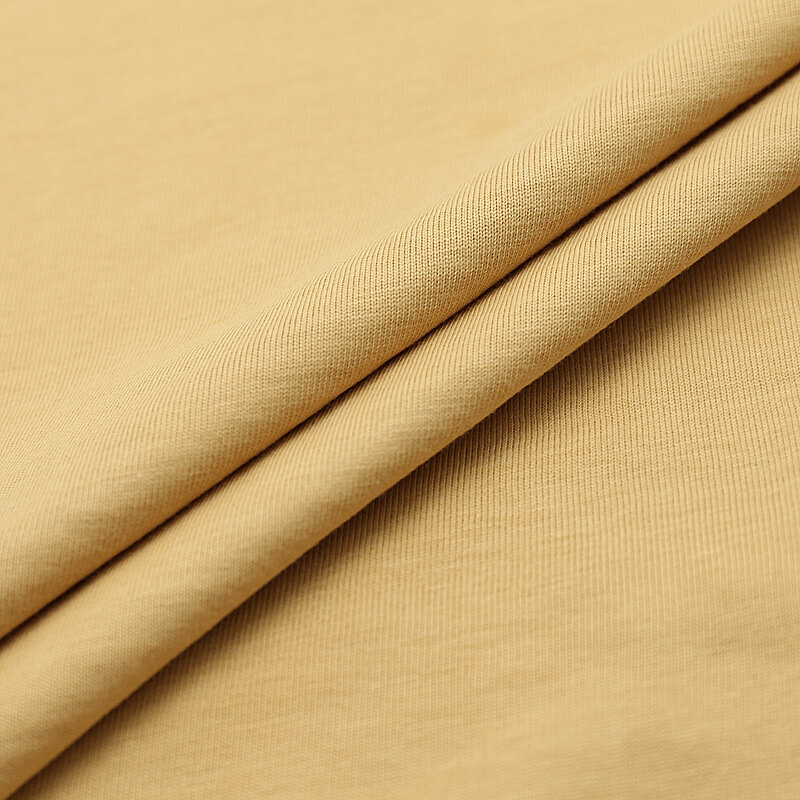
Features of Combed Yarn:
Luxurious: Combed yarn feels oh-so-smooth and posh, perfect for fancy clothes and delicate fabrics. Pilling? Nah, Not Here: Short fibers are banished! Combed yarn keeps fabrics looking fresh and pill-free, even with lots of wear. Durability Extraordinaire: With those long fibers in play, combed yarn makes sure your textiles stand the test of time.
Open-End Yarn
What’s Open-End Yarn? Open-end yarn comes from rotor spinning, where fibers are twisted together without the traditional spinning frame.
Features of Open-End Yarn:
Speed Racer: Open-end spinning is super fast, making it perfect for speedy production and big orders. Wallet-Friendly: Saving money is cool! Open-end yarn is budget-friendly and energy-efficient, so it won’t break the bank. Eco-Warrior Vibes: Go green with open-end yarn! It’s eco-friendly, with less waste and a positive impact on the planet.
What is GSM and Singles for T-Shirt Fabric?
GSM (Grams per Square Meter): GSM is just a fancy way of saying how thick or heavy a fabric is. For T-shirts, GSM ranges from 120 to 220. Lower GSM means lighter and more breathable fabric, perfect for hot days. Higher GSM is thicker and sturdier, ideal for cooler weather and long-lasting tees.
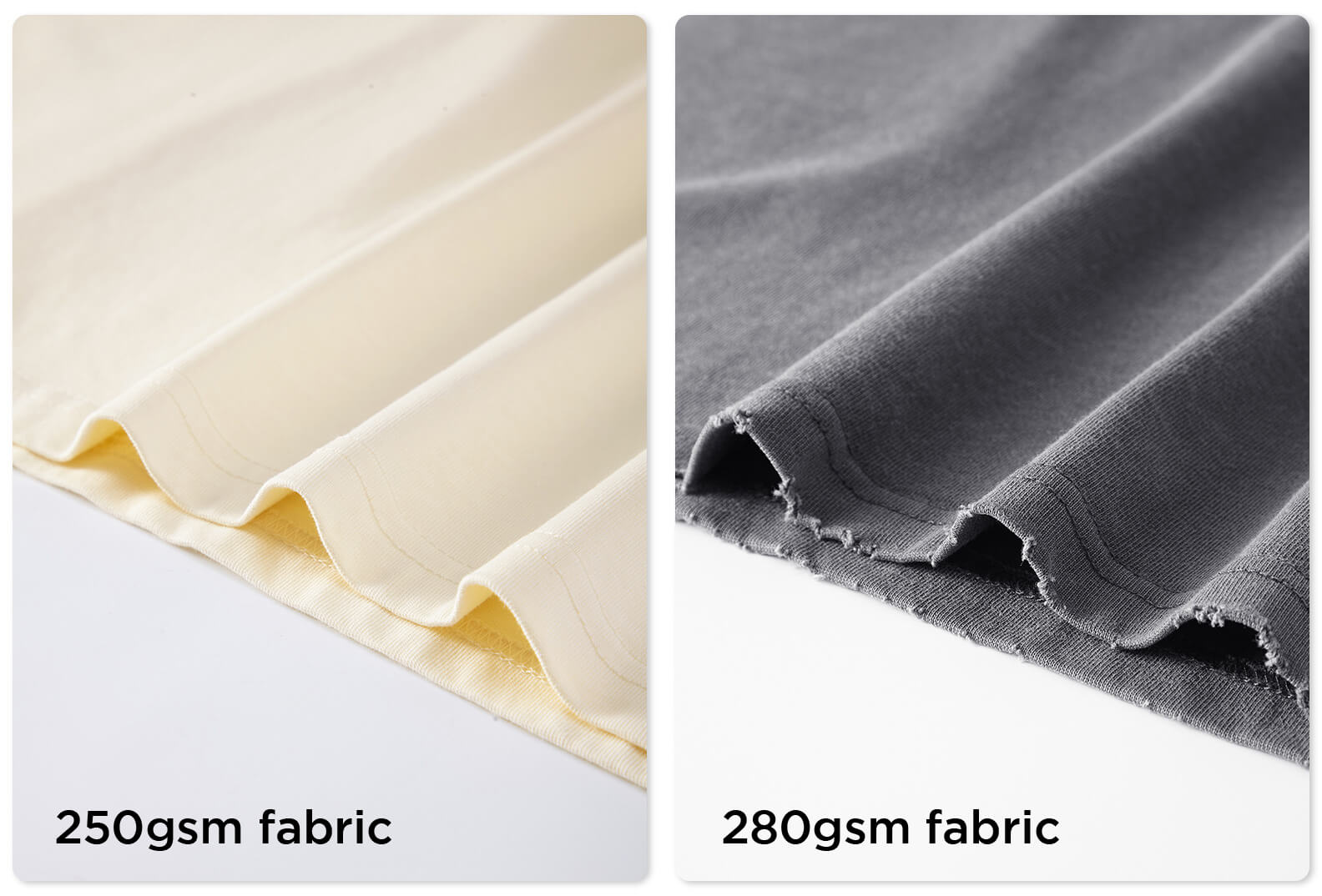
Singles (S): Singles is about how thick each yarn strand is in the fabric. A higher Singles number means finer yarn. So, a fabric with 40S will be softer and lighter than one with 32S. The Singles affect how the T-shirt feels and hangs on you.
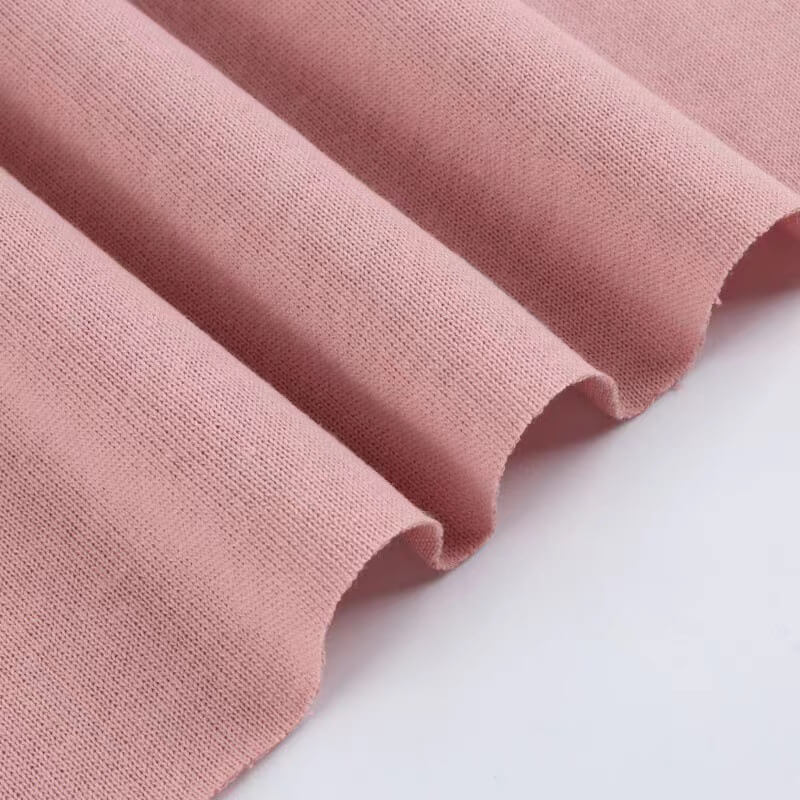
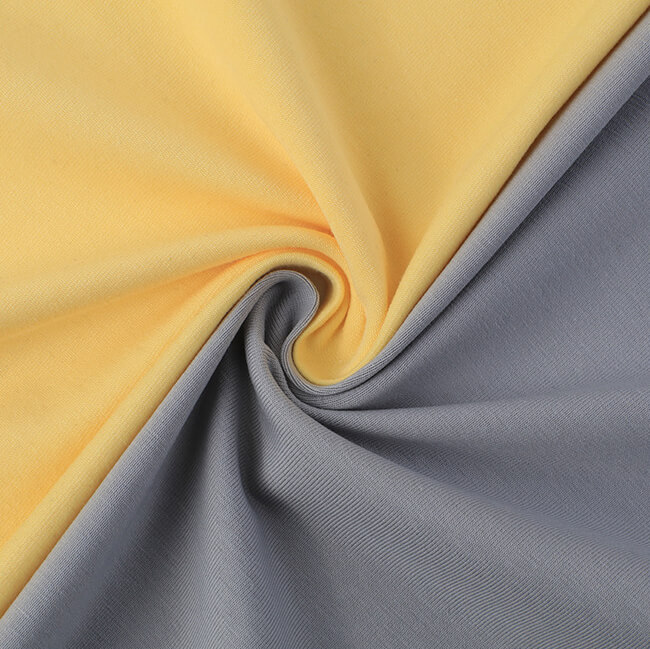
Conclusion
Are you a brand owner seeking to bring your t-shirt vision to life? Look no further! As a clothing manufacturer, we specialize in creating exceptional tees using a variety of fabric structures. Our expertise in sourcing high-quality materials and our commitment to delivering top-notch products make us the perfect partner for your t-shirt venture. Let’s collaborate to create tees that leave a lasting impression on your audience. Contact us today to embark on this exciting journey together!
